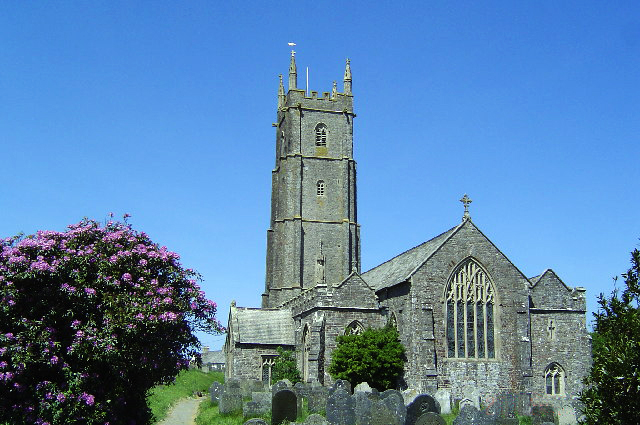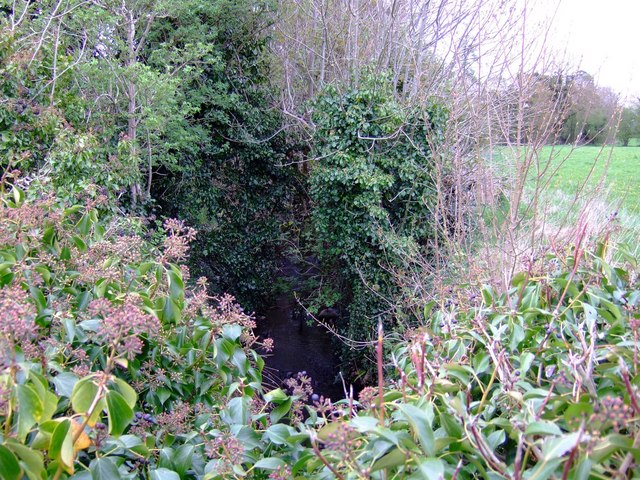|
Nechtan (other)
{{Hndis ...
Nechtan, Nectan or Neithon may refer to: Kings * Nechtan Morbet (), king of the Picts * Nechtan nepos Uerb (), king of the Picts * Nechtan mac Der-Ilei (died 732), king of the Picts * Neithon of Alt Clut (), King of Strathclyde Other people * Nechtan of Aberdeen (), bishop of Aberdeen * Saint Nectan of Hartland (), associated with Devon and Cornwall * Saint Nectan, nephew and disciple of Saint Patrick Mythology * Nechtan Scéne, character in the Irish ''Ulster Cycle'' * Nechtan (mythology), an Irish god * Nechtan mac Collbran, Irish-mythological character in the Voyage of Bran The Voyage of Bran ( sga, Immram Brain [], meaning "The Voyage of Bran [son of Febail]") is a medieval seventh- or eighth-century Irish language narrative. Source The date of composition has been assigned to the late 7th or early 8th century, ... [...More Info...] [...Related Items...] OR: [Wikipedia] [Google] [Baidu] |
Nechtan Morbet
Nechtan, son of Erip, was the king of the Picts from 456 to 480. The king lists supply a number of epithets for Nechtan: Morbet and Celchamoth and the Latin Magnus (the Great). He is said to have reigned for twenty-four years. In a rare change from a bald statement of names and years, the king lists provide a tradition linking Nechtan to the foundation of Abernethy:"So Nectonius the Great, Wirp's son, the king of all the provinces of the Picts, offered to Saint Brigid, to the day of judgement, Abernethy, with its territories ... Now the cause of the offering was this. Nectonius, living in a life of exile, when his brother Drest expelled him to Ireland, begged Saint Brigid to beseech God for him. And she prayed for him, and said: "If thou reach thy country, the Lord will have pity on thee. Thou shalt possess in peace the kingdom of the Picts." A life of Saint Boite, after whom Monasterboice is named, claims that Boite raised Nechtan from the dead, and associated him with Kirkbuddo ... [...More Info...] [...Related Items...] OR: [Wikipedia] [Google] [Baidu] |
Nechtan Nepos Uerb
Nechtan grandson of Uerb, was king of the Picts from 595 to around 616. It has been suggested that this Nechtan is the same person as the Neithon of Alt Clut, Neithon who ruled the kingdom of Kingdom of Strathclyde, Alt Clut. According to the Pictish Chronicle, Nechtan reigned for 20 or 21 years. While the death of his predecessor Gartnait II, Gartnait is given in 597 by the ''Annals of Tigernach'', the death of Nechtan is not certainly recorded. He may be the Nechtan son of Canu whose death appears in the ''Annals of Ulster'' for 621, although this would be difficult to reconcile with the idea that he was Neithon son of Guipno son of Dumnagual I of Alt Clut, Dumnagual Hen of Alt Clut. It has been suggested that the Canu or Cano referred to in the ''Annals of Ulster'' is the Canu Garb named by Senchus fer n-Alban, making this Nechtan the grandson of Gartnait II, who has been suggested as a son of Áedán mac Gabráin of Dál Riata. It is uncertain whether it is this Nechtan or Ne ... [...More Info...] [...Related Items...] OR: [Wikipedia] [Google] [Baidu] |
Nechtan Mac Der-Ilei
Nechtan mac Der-Ilei or Nechtan mac Dargarto (Old Irish ''Nechtan mac Der-Ilei'' or ''Nechtan mac Dargarto'') (before 686–732) was king of the Picts 706–724 and 728–729. He succeeded his brother Bridei in 706. He is associated with significant religious reforms in Pictland. He abdicated in 724 in favour of his nephew and became a monk. In 728 and 729 he fought in a four-sided war for the Pictish throne. Background It has been argued that Nechtan son of Derile should be identified with the Nechtan son of Dargart mentioned in the Annals of Ulster in 710. Dargart is taken to be the Dargart mac Finguine who died in 686, a member of the Cenél Comgaill kindred of Dál Riata. On this basis, and because Bede mentions that the Picts allowed for matrilineal succession in exceptional cases, it is thought that Der-Ilei was Nechtan's mother. Other brothers and half-brothers of Nechtan and Bridei would include Ciniod or Cináed, killed in 713, Talorgan son of Drest, a half-brother or fos ... [...More Info...] [...Related Items...] OR: [Wikipedia] [Google] [Baidu] |
Neithon Of Alt Clut
Neithon (died c. 621) was a 7th-century ruler of Alt Clut, the Brittonic kingdom later known as Strathclyde. According to the Harleian genealogies, he was the son of Guipno map Dumnagual Hen. Alfred Smyth suggests he is the same man as King Nechtan the Great of the Picts, and perhaps the Nechtan son of Canu the '' Annals of Ulster'' record as having died in 621. The ''Senchus fer n-Alban'' indicate that Gartnait, the son of Áedán mac Gabráin, King of Dál Riata, sired a son named Cano, but unless the Harleian genealogies are to be ignored, this would make Gartnait and Dumnagual Hen the same persons, as the respective fathers of Gartnait and Guipno. However, it is possible that either as an Alt Clut Briton ascending the throne of Pictland, or as a Pict ascending the throne of Alt Clut, his genealogy might have been altered, and it is notable that in the Pictish king-lists he is called "''Nechtan, nepos Uerb''", suggesting that it was a descent from Uerb that mattered in Pictland, ... [...More Info...] [...Related Items...] OR: [Wikipedia] [Google] [Baidu] |
Nechtan Of Aberdeen
Nechtan of Aberdeen is the first Bishop of Aberdeen after the seat of the bishopric had been moved to Aberdeen from Mortlach. The only contemporary sources for Bishop Nechtan are charters; he appears as "Nectan escob Abberdeon" in a Gaelic charter recorded in the ''notitiae'' on the '' Book of Deer'', a charter which explicitly dates to "the eighth year of the reign of David", that is, 1131. He also appears in a charter granted to him by King David I of Scotland, a charter which the modern editor dates to 1137. Later Medieval authorities make specific claims about dates. Hector Boece, for instance, wrote that Nechtan became bishop in 1122, and that Nechtan ruled Mortlach for 14 years, and a further 17 years at Aberdeen. Moreover, Gavin Dunbar, a 16th-century Archbishop of Glasgow The Archbishop of Glasgow is an archiepiscopal title that takes its name after the city of Glasgow in Scotland. The position and title were abolished by the Church of Scotland in 1689; and, in t ... [...More Info...] [...Related Items...] OR: [Wikipedia] [Google] [Baidu] |
Nectan Of Hartland
Saint Nectan, sometimes styled Saint Nectan of Hartland, was a 5th-century holy man who lived in Stoke, Hartland, in the nowadays English, and at the time brythonic-speaking county of Devon, where the prominent St Nectan's Church, Hartland is dedicated to him. Life A "Life of Nectan", along with an account of the finding of his body and a collection of miracle stories, can be found in a 14th-century manuscript now in Gotha. The "Life" has been dated to the end of the 12th century. Its account holds that Nectan was born in Ireland but moved to Wales when he was young in 423 AD, the eldest of the 24 children of King Brychan of Brycheiniog (now Brecknock in Wales). Nectan heard of the great hermit of the Egyptian desert, St Anthony, and was inspired to imitate his way of life. Seeking greater solitude, Nectan and his companions left Wales, intending to settle wherever their boat happened to land. Nectan and his companions wound up on the northern coast of Devon at Hartland, where ... [...More Info...] [...Related Items...] OR: [Wikipedia] [Google] [Baidu] |
Saint Patrick
Saint Patrick ( la, Patricius; ga, Pádraig ; cy, Padrig) was a fifth-century Romano-British Christian missionary and bishop in Ireland. Known as the "Apostle of Ireland", he is the primary patron saint of Ireland, the other patron saints being Brigit of Kildare and Columba. Patrick was never formally canonised, having lived prior to the current laws of the Catholic Church in these matters. Nevertheless, he is venerated as a Saint in the Catholic Church and in the Eastern Orthodox Church, where he is regarded as equal-to-the-apostles and Enlightener of Ireland. The dates of Patrick's life cannot be fixed with certainty, but there is general agreement that he was active as a missionary in Ireland during the fifth century. A recent biography on Patrick shows a late fourth-century date for the saint is not impossible. Early medieval tradition credits him with being the first bishop of Armagh and Primate of Ireland, and regards him as the founder of Christianity in Ireland, con ... [...More Info...] [...Related Items...] OR: [Wikipedia] [Google] [Baidu] |
Nechtan Scéne
The Ulster Cycle ( ga, an Rúraíocht), formerly known as the Red Branch Cycle, is a body of medieval Irish heroic legends and sagas of the Ulaid. It is set far in the past, in what is now eastern Ulster and northern Leinster, particularly counties Armagh, Down and Louth. It focuses on the mythical Ulster king Conchobar mac Nessa and his court at Emain Macha, the hero Cú Chulainn, and their conflict with the Connachta and queen Medb. The longest and most important tale is the epic ''Táin Bó Cúailnge'' (Cattle Raid of Cooley). The Ulster Cycle is one of the four 'cycles' of Irish mythology and legend, along with the Mythological Cycle, the Fianna Cycle and the Kings' Cycle. Ulster Cycle stories The Ulster Cycle stories are set in and around the reign of King Conchobar mac Nessa, who rules the Ulaid from Emain Macha (now Navan Fort near Armagh). The most prominent hero of the cycle is Conchobar's nephew, Cú Chulainn. The Ulaid are most often in conflict with the Connac ... [...More Info...] [...Related Items...] OR: [Wikipedia] [Google] [Baidu] |
Nechtan (mythology)
Nechtan is a figure in Irish mythology who is associated with a spring marking the source of the River Boyne, known as Nechtan's Well or the Well of Wisdom. He was the husband of Boann, eponymous goddess of the Boyne. Nechtan is believed to be another name for Nuada. Etymology According to Georges Dumézil the name ''Nechtan'' is perhaps cognate with that of the Romano-British god Nodens or the Roman god called Neptunus and the Persian and Vedic gods sharing the name Apam Napat. The name could ultimately be derived from the Proto-Indo-European root ''*nepot-'' "descendant, sister's son", or, alternatively, from ''nebh-'' "damp, wet". Another etymology suggests that ''Nechtan'' is derived from Old-Irish ''necht'' "clean, pure and white", with a root ''-neg'' "to wash", from IE ''neigu̯-'' "to wash" As such, the name would be closely related mythological beings, who were dwelling near wells and springs: English neck (from Anglosaxon ''nicor''), Swedish ''Näck'', German ''Nixe ... [...More Info...] [...Related Items...] OR: [Wikipedia] [Google] [Baidu] |
Nechtan Mac Collbran
{{Hndis ...
Nechtan, Nectan or Neithon may refer to: Kings * Nechtan Morbet (), king of the Picts * Nechtan nepos Uerb (), king of the Picts * Nechtan mac Der-Ilei (died 732), king of the Picts * Neithon of Alt Clut (), King of Strathclyde Other people * Nechtan of Aberdeen (), bishop of Aberdeen * Saint Nectan of Hartland (), associated with Devon and Cornwall * Saint Nectan, nephew and disciple of Saint Patrick Mythology * Nechtan Scéne, character in the Irish ''Ulster Cycle'' * Nechtan (mythology), an Irish god * Nechtan mac Collbran, Irish-mythological character in the Voyage of Bran The Voyage of Bran ( sga, Immram Brain [], meaning "The Voyage of Bran [son of Febail]") is a medieval seventh- or eighth-century Irish language narrative. Source The date of composition has been assigned to the late 7th or early 8th century, ... [...More Info...] [...Related Items...] OR: [Wikipedia] [Google] [Baidu] |



